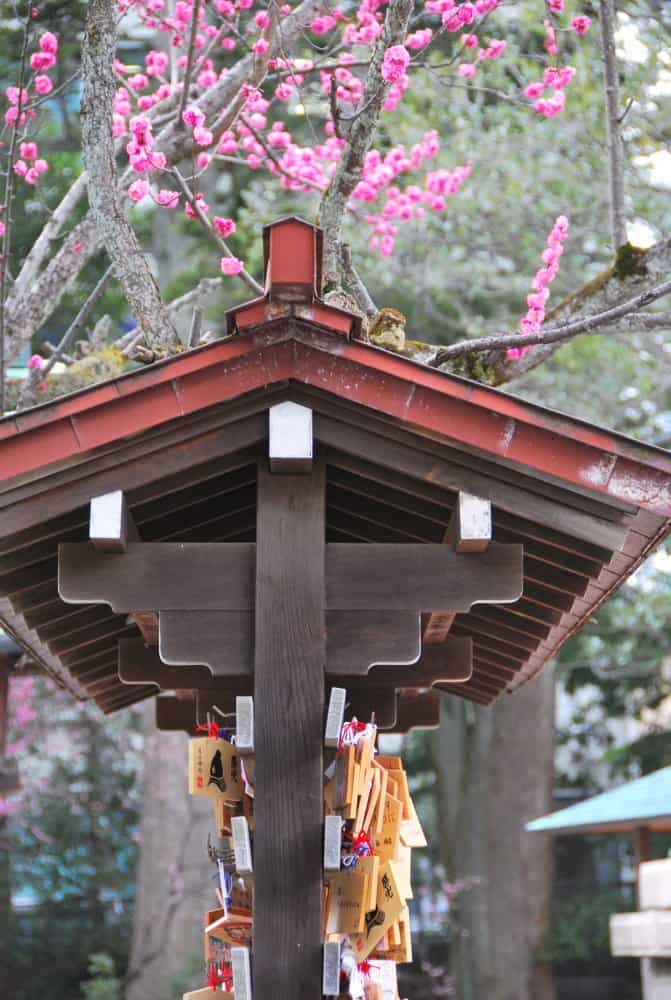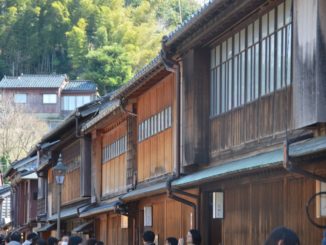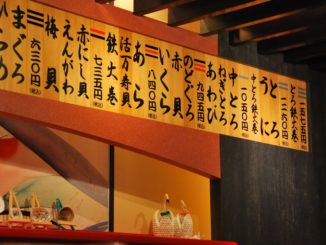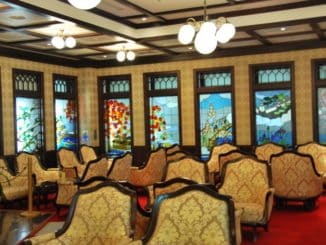Kanazawa
Prefecture: Ishikawa
Population: 465,856
Telephone area code:076
Automotive symbol: 金沢 (Kanazawa)
Surface area: 468,64 Km2
The capital of the Prefecture of Ishikawa, Kanazawa, is the commercial and cultural centre in the Hokuriku region.
It is situated on the Sea of Japan and is surrounded by the Japanese alps, the Hakusan National Park and the Noto Peninsula.
The climate is a little cooler than that of Tokyo in the summer and somewhat colder in winter with a relatively high humidity.
What to see
Kanazawa had the good fortune to be spared, like Kyoto, from the bombings of the Second World War and has thus retained a considerable part of its historical and architectural heritage.
The Kenroku-en, together with the Kairaku-en at Mito and the Koraku-en in Okayama is classified as one of the three most beautiful gardens in Japan. It was originally the outer garden of the Castle of Kanazawa where the powerful Maeda clan lived
The presence of a wide variety of trees that bloom at different times of the year, provides different scenery depending on the season.
Kenroku-en literally means the park of the six attributes that are fundamental for a perfect garden (according to the Chinese theory regarding landscaping), namely: plenty of space, an abundance of water, artifice, antiquity, isolation and wide, open views.
Annexed to the garden, but requiring a different entry ticket, is the Seisongaku villa which is one of the very few samurai pavilions from the Edo period that has remained more or less intact.
Nearby is the Museum of the 21st Century which exhibits objects and contemporary art-works by famous artists.
The museum doesn’t have a façade or even a main entrance which is intended to signify a 360 degrees acceptance of new trends and ideas.
Not far from the gardens is the D.T. Suzuki Museum which is dedicated to the scholar who made the greatest contribution to spreading the word and creating the image of Buddhism and Zen that is still prevalent in the West.
In this museum, which also has an interesting garden, it is possible to do meditation and read the works of Suzuki in English.
In the south of the city, is the teramachi area which is full of temples. Interestingly, the Myoruji Temple, which is also known as the Ninja Temple, not because it had anything to do with the ninjas but because after the unification of Japan by the Tokugawa Shogunate and the strict limits that were imposed on the construction of military buildings in order to weaken the local lords, the Maeda, who were the local lords, posted numerous soldiers in this temple and built secret passages and hidden rooms in order to be able to warn the castle dwellers in the event of an outside attack.
In Kanazawa, small parts of the quarter where the tea houses, (chayagai) were, have been preserved and you can visit these places where once upon a time, tea was taken whilst enjoying the spectacle given by the geishas.
Kanazawa Castle, which belonged to the powerful Maeda clan who were second only to the Tokugawa, was built in 1583 and has been rebuilt several times since due to fires and other forms of destruction.
Not far away is the old district where the families of the Samurai resided.
Notable because of its architecture which mixes European and Asiatic elements which was unusual for the period in which it was constructed (in 1599), is the Oyama Shrine.
History
Kanazawa is linked to the Ikko sect, a branch of Buddhism of the Pure Land that was spread across the area by the head priest Rennyo, a pupil of the founder, Shinran, who gave life to, due to the weakening of the Shogunate of Kyoto, a sort of independent enclave or community under the Buddhist umbrella in the southern region of Kanazawa which then became known as Kaga.
When Nobunaga destroyed the Ikko sect and took back control of the territory, he handed this over to his vassal, Sakum Morimasa, as the feudal lord.
Subsequently, Hideyoshi and his most faithful ally, having conquered the feud, the latter territory, the largest in Japan, was entrusted to the Maeda clan.
The Maeda clan turned this into a thriving area and Kanazawa would become one of the most important cities on the archipelago.
Visit Kanazawa
[ Mar.2016 ] On the way back from Noto Peninsula in Japan, we visited Kanazawa just for a few hours. It was four years since I went there last. During this time, the Shinkansen started…
Sushi in Kanazawa was exceptional
[april 2012] I went to a sushi restaurant in Oumicho market in Kanazawa called Genpei. I have not eaten sushi as good as this for a long time! Especially the seasonal firefly squid was fantastic….
Staying in a hotel in the city
[April 2012] The second night in Kanazawa, we stayed in a hotel called Kanazawa Hakuchouro. The room is western, but they have Japanese style hot spring baths and the atmosphere of the hall and the…




